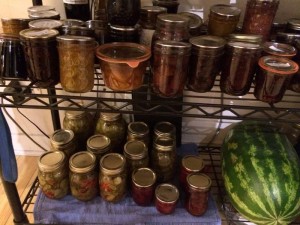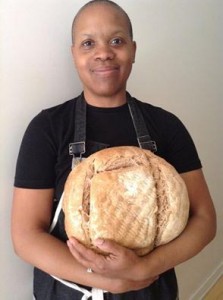By Alan Lake (Jazzfood)
There’s no lunch in the Carolinas – just dinner at mid-day and supper in the evening. And for breakfast this holiday season, a menu of shrimp and rice and vegetables mostly grown on a small outer island off the coast, along with stewed blue crabs, fried flounder, and oysters. Welcome to the holidays, Carolina style. In keeping with the season, a feast is in order. And for that, Ava George Stewart has got you covered.
Sporting an enormous smile you can feel and an infectious, vivacious laugh, Ava’s a criminal lawyer who got her Master Gardener’s certification while in and out of court defending bad guys all day long – seamlessly balancing hard science with true crime. She’s a multifaceted person with home cooking in her soul. Living in Chicago with a part of her heart in the South, Ava embodies the spirit of the holidays: sharing.
Growing Up in the South
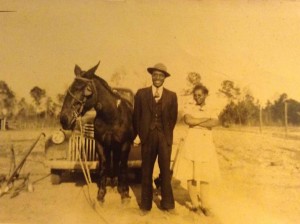
Ava is the progeny of a long line of overachievers. Both sides of her family were among the few black Southerners that were not enslaved. Common belief is that they came as indentured servants from Europe or the islands. So at the end of their term they were free to go.
They knew their fortunes would fare better by avoiding the mainland, so they stayed on the island. Black slaves in the Carolinas were often brought to harvest rice, as they did on the west coast of Africa (where most were from). Rice and indigo were the main crops. Cotton and tobacco would come later.
Her father’s people were self-sufficient farmers that owned land on the easternmost coast of North Carolina. Harlowe, N.C., was a place so remote the first roads weren’t even built until World War II. In her dad’s day, he’d have to ferry to the mainland to go to school.
Ava remembers her paternal grandmother (“Miss” Eva) being the community seamstress, as well. She can’t remember ever seeing money change hands, though, as bartering was a way of life. Ava remembers her grandparents’ formal dining room table, full of dress patterns and people coming through with all sorts of stuff to trade . . . say, a dress for a bushel of crabs. At the time, Harlowe was inhabited primarily by First Nations and African Americans. Ava likens it to a small town in Wisconsin – with 1,000-1,500 people, a high school and a couple of churches.
She knew her father as a humanities professor and classical pianist, but learned at age 17 that he’d started as a trombonist and had led a jazz big band. He’d never mentioned it. Music runs in her blood, though. Her cousin is Marcus Miller, one of the preeminent gods of bass – a guy who’s played on over 500 albums with the likes of Miles Davis, Frank Sinatra, Michael Jackson and Aretha Franklin.
Her mother’s people were domestics from Walterboro, S.C., who cooked “simple, real food” every day. Mama was the first in her family to graduate from university, and later taught French for nearly 40 years.
Though her parents led a life in academia, they benefited from the bounty of their neighbors. Pretty much everyone had a vegetable patch out back. Sacks filled with apples, pears, peaches, corn, tomatoes, cabbage and collards regularly found their way to her parents’ door. With an abundance of fresh food everywhere, almost none of the produce and vegetables her family ate were bought in a store. If it did come out of a freezer, it was leftovers like Mr. McDaniel’s collard greens that her family froze after “not being able to look at them anymore,” she says. But never store-bought.
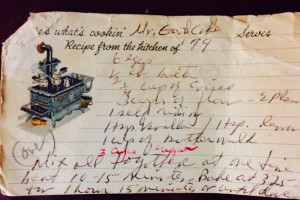
Ava grew up in the tight-knit community of Orangeburg, S.C. Mathematicians, scientists, musicians and artists made for a rich tapestry of family friends and relations. Here, unlike most big cities, people stayed. They didn’t migrate. In Ava’s opinion, African Americans had rougher lives in the more central southern states than on the rural eastern seaboard. Their very remoteness led to fewer problems with the mainland. That’s not to say things weren’t horrible, but there didn’t seem to be the same level of systematic group terrorization that slaves in Mississippi or Georgia endured.
Colonial South Carolina is the only state ever to have a black majority, even though they were counted as property with only 3/5 the value of a white person, as if not full human beings! There were a few freed people and runaways – but, by and large, the vast majority of the black people in the state were enslaved. A planned slave rebellion in the state known as “the rising” of 1822 was suppressed when former slave and mastermind, Denmark Vesey, was sold out by a house servant that disclosed the plan to local authorities Vesey was caught and quickly put to death for his efforts. Vesey’s other claim to fame was as the author of the poignant spiritual song “Go Down Moses”:
When Israel was in Egyptland
Let my people go
Oppressed so hard they could not stand
Let my people go.
Go down, Moses
Way down in Egyptland
Tell old Pharaoh, “Let my people go!”
Ava suspects this may have influenced the group zeitgeist – feeling it may have changed how things worked for black people in South Carolina both during slavery and afterwards. It just wasn’t as bad as it was for many others, and not being broken as badly by “the man” affected their culture. For instance, even up through the 1970s it was still pretty common to find sharecropping in Alabama or Mississippi. Not so in the Carolinas. This is the environment that shaped Ava’s childhood.
As Ava grew up, a neighbor down the street became a kind of surrogate grandmother. As old-fashioned Southern as can be, “Miss” Mildred Boston cooked in the lunchroom cafeteria at the grade school that Ava and her sister attended. It was she who taught a nine-year-old Ava to bake a cake from scratch. Same with chicken and dumplings, although not drop dumplings – these were more like pasta: roughly cut, thicker noodles rolled out with a rolling pin.
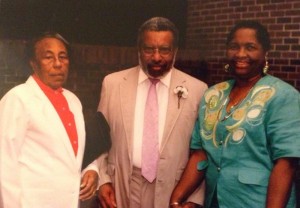
Miss Boston had three sons, but once they were grown and gone, she continued her cooking without downsizing. Every weekend she’d bake, and people would drop by for a slice du jour. One could always count on there being a real cake or pie at her house. Miss Boston held court with any and all, and while doing so, fed them.
Truth is, whenever she went to anyone’s home it was similar – a Southern-infused culture with all the food on the table made from scratch. As custodian of this knowledge, Ava never looked back, easily ”dipping her toe” into the proverbial skillet.
Chicago Explorations
Coming to Chicago in 1985 to attend school at Northwestern, Ava fell in love with Chinese food, corner delis and street food in particular – these pretty much didn’t exist back home. She’d been exposed to them in her travels, but once in Chicago, she began exploring all the food options that her newly adopted city afforded.
Her father got her a toaster oven and she began cooking for her friends in college, doing what came naturally. But for most of her friends, it wasn’t natural. Their families didn’t put as much emphasis on “real food,” so Ava had many fans (still does) and eventually parlayed her skills into trading food for things she needed. Let’s just say Ava’s cooking got her out of more than a few work shifts at her various college jobs.
Type 2 diabetes and heart disease had taken a toll on her family (her grandmother lost both legs and her eyesight to diabetes and her father had three heart attacks), so by the mid-1990s, Ava turned to vegetarianism. A book gifted by her sister called Diet for a New America by Baskin and Robbins heir John Robbins got her thinking in that direction. That, along with the ever mounting evidence about people on plant-based diets being more heart-healthy and less apt to develop Type 2 diabetes, convinced her to give it a try. Seeing it as preventative, Ava ate her last four-legged animal in the early ‘90s. By the mid-’90s poultry and seafood were eliminated from her diet as well. She doesn’t preach about it and has no problem being in a room full of carnivores – which, knowing the company she keeps, is often the case.
Around 20 years ago, Ava says, she felt a distinctive shift in her life. In law school, while researching torts and whatnot, Ava realized she had a tendency to fall down the rabbit hole à la Alice, and get incredibly immersed in the various subjects she was studying. Food became another one of those bunny burrows. She did some cooking on the side for extra money – baking scones, pies and quick breads to sell to students, and to a few food outlets as well. A logical extension of that was canning and preserving, which in turn, begat vegetable gardening.
Cooking with Ava
While she didn’t grow up preserving and gardening, a new world opened up to her when she learned how. With her busy schedule, Ava uses the numerous items she has “put up” all the time and finds ingenious uses for her favorites. She loves that her pickled and preserved ingredients play a significant role in simplifying everyday home cooking by cutting prep time. Don’t have to peel, chop or cook them – just open a jar and it’s done.
Her fig-bay leaf-honey jam works as well with grown up grilled-cheese sandwiches as it does with roast chicken. A chow chow recipe gleaned from Chef Paul Virant gets used as a condiment, or tossed into a bowl of chili, or mixed in a salad. Pickles are chopped up and used as a vegetable in stir-fries. The list is limited only by her imagination, which is undoubtedly as fertile as the gardens she plants.
One of the things she learned from preserving is that she likes certain items she hadn’t liked before, and that it’s often the method or preparation, rather than the ingredient, that she wasn’t fond of. She’s intrigued by how, when making something from scratch, she controls the taste profiles so they speak to her, instead of taking it as it comes via the form of someone else’s recipe. (Author’s Note: Me? I’ve always felt that recipes are guidelines, not contracts, and this falls neatly into that mindset. But I cook professionally. For a home cook it can be a revelation. A culinary epiphany of sorts.)
Her go-to cookbooks and resources for inspiration are Cooks Illustrated, Plenty: Vibrant Recipes from London’s Ottolenghi and Mes Confitures: The Jams and Jellies of Christine Ferber. Tattered copies of the Silver Palate Cookbook and the Joy of Cooking make the list as well. Quite often it’s just to incorporate their techniques into her own recipes. For the record, her scrambled eggs are now done on a low flame for the desired soft curd, and finished off-heat. She also speaks reverently of America’s Test Kitchen in Cambridge, Mass., as it explains the science behind the food in great detail (and to her satisfaction).
Speaking of science, Ava shares a secret for attaining the proper texture for the classic French round shortbread cookie called sablé. Since a sandy, melt-in-your-mouth, buttery texture is desired, you need to take as much moisture out as possible. So, after much study, she uses hard-boiled egg yolks, not raw, grated into the cookie dough. It makes perfect sense, as it reduces the amount of liquid but retains the fat for richness and proper mouth feel.
Growing up, for the holidays there would be an elaborate spread on the table – shrimp and rice, Hoppin’ John, baked mac and cheese, fresh candied yams (no marshmallows), collard greens, green beans that aren’t in a casserole, a turkey or ham, Parker House rolls, cornbread, dressing, and her mother’s favorite: ambrosia with coconut, toasted pecans and tropical fruits. No potatoes – this is rice country after all.
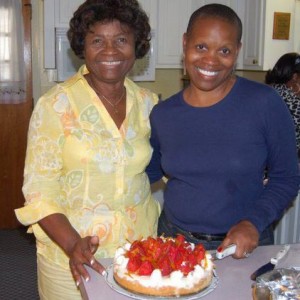
And because her husband Alistair is English – and doesn’t like some of the Southern holiday foods – Ava cooks some traditional dishes and modifies others. To appease him (and her mother-in-law), she’s made adjustments – to the classic Hoppin’ John, for instance. Black-eyed peas are supposed to bring you luck if you eat them on New Year’s Day, and are traditionally eaten with collard greens that are supposed to bring you money, as well as rice. In fact, this dish is also referred to as “luck and money.” For the first few years of their marriage, Ava tried to get them to eat the traditional Hoppin’ John on New Year’s. No go. They’d push it around on the plate and have a reluctant teaspoon at best.
But it’s the ingredients more than the dish that are supposed to bring the luck, so Ava used the same components disguised in a curry. Her Brits love it in its transmuted form, and get the added benefits of the good juju Ava was trying to impart upon them.
“THAT they would eat!” she squeals with delight, as if getting over on a petulant child. “I don’t have to fight them anymore and everyone is happy.”
Is there a special holiday spirit she remembers? After some thought, Ava declares, “It’s mainly about the notion of community. These people weren’t blood, they weren’t family, they were all just neighbors who shared.”
An excellent idea, holidays or not.




